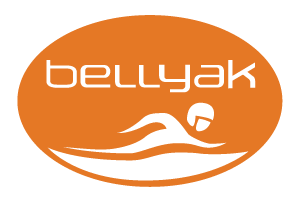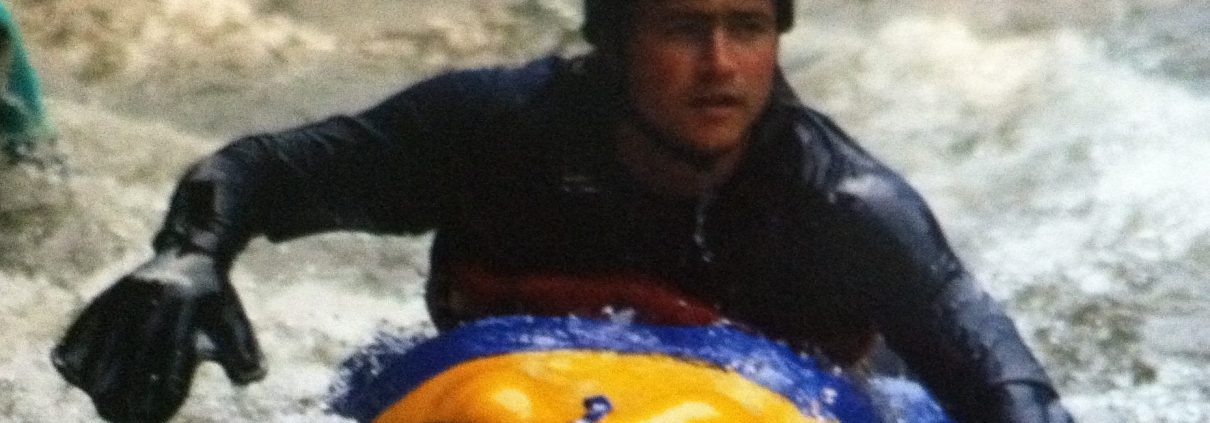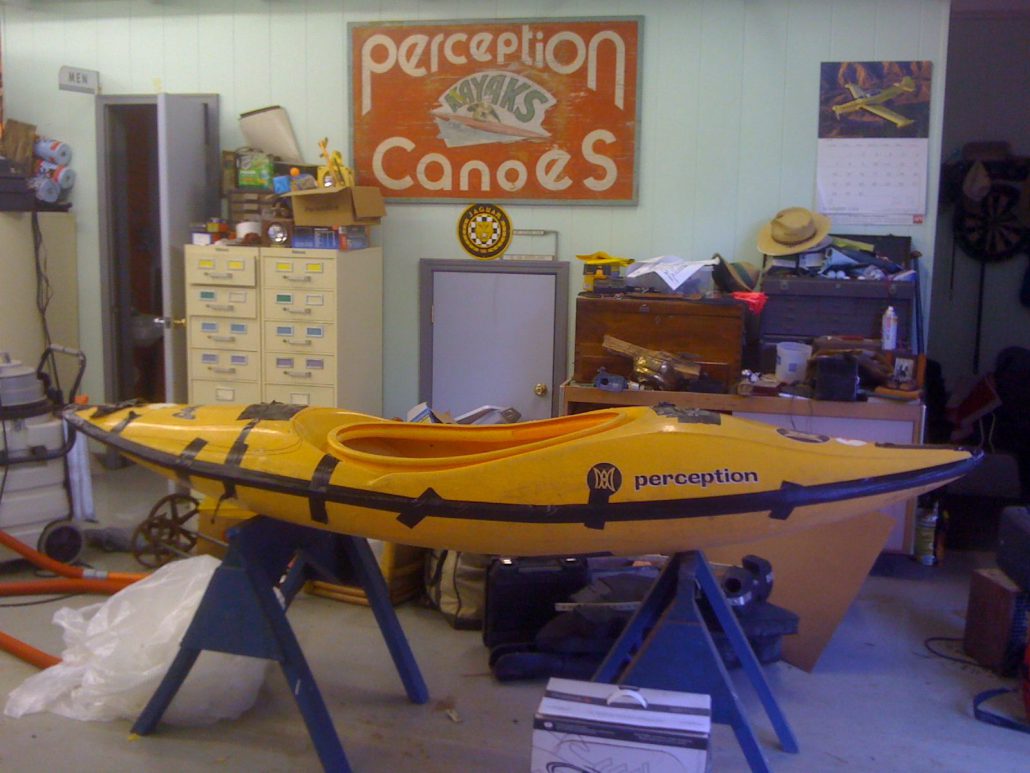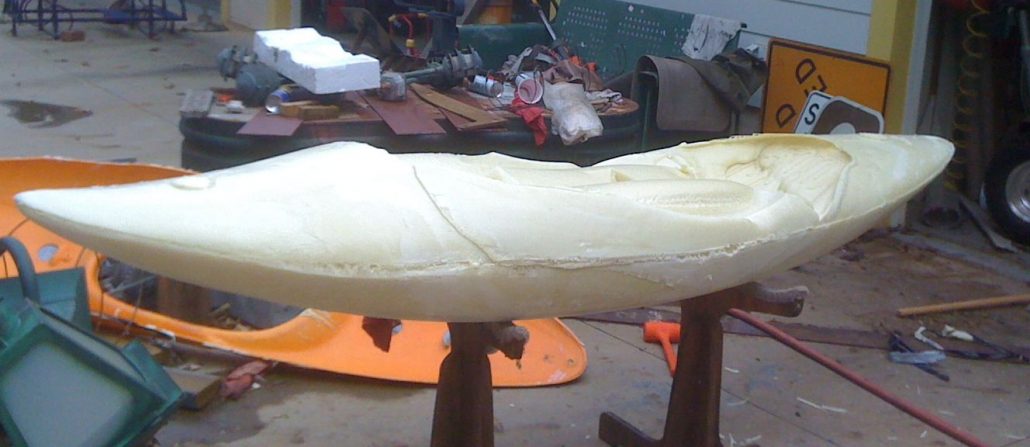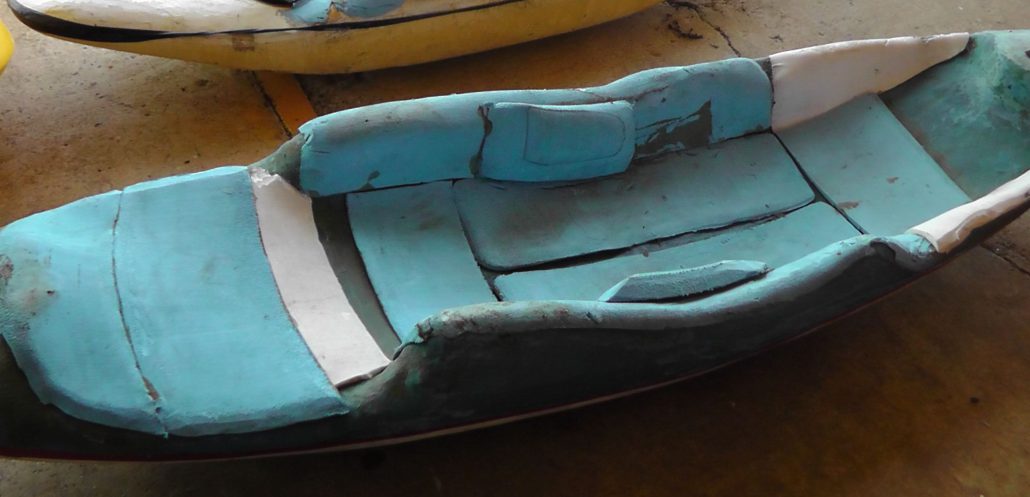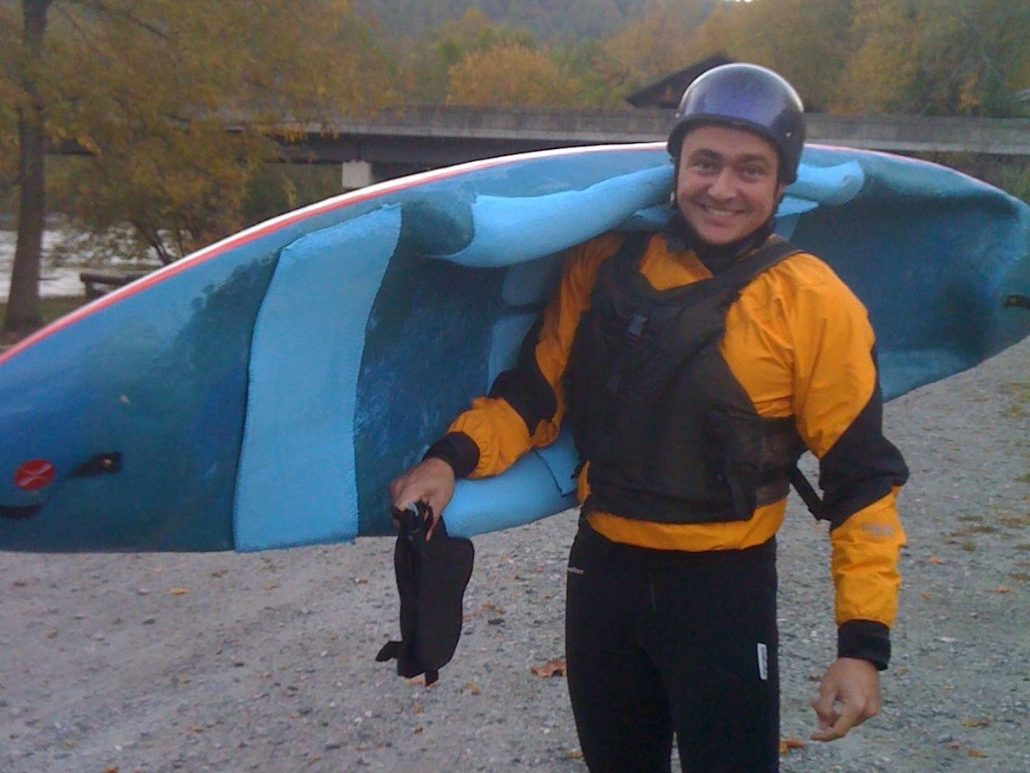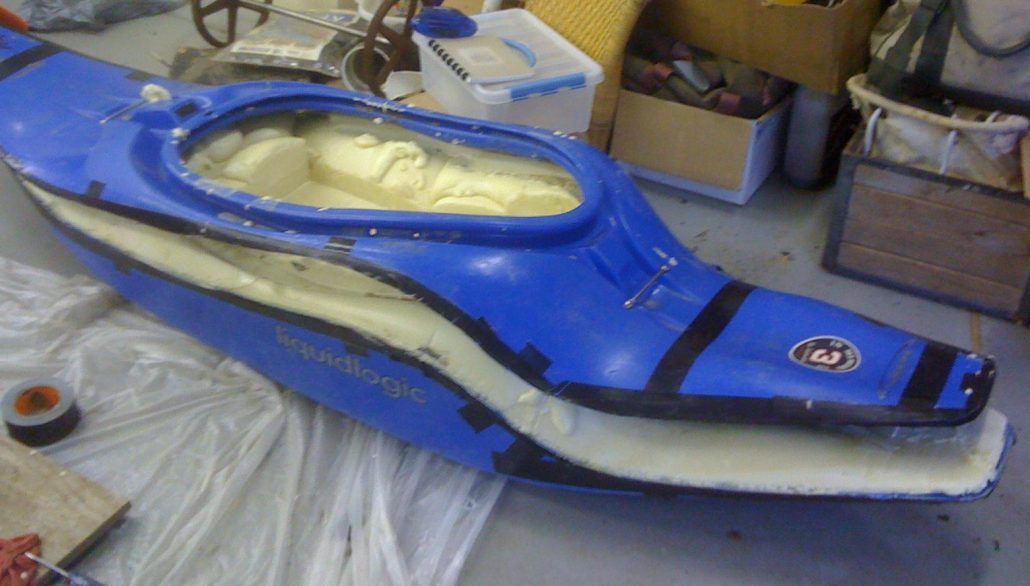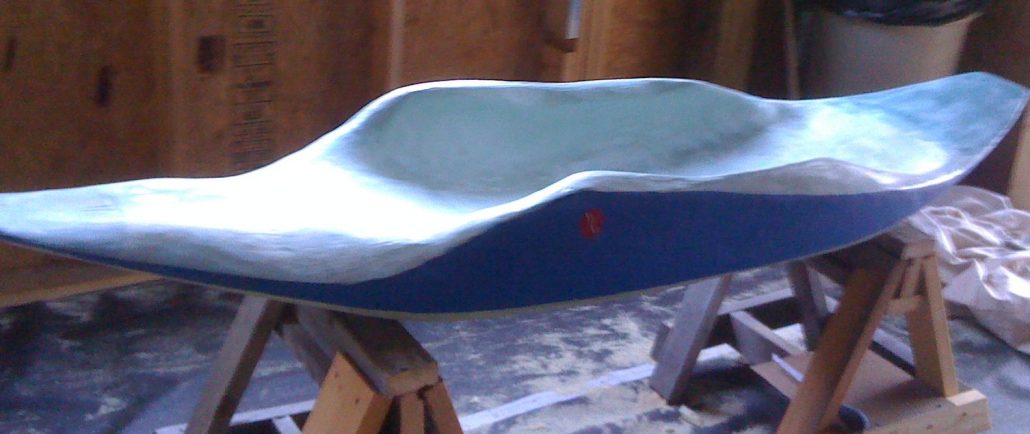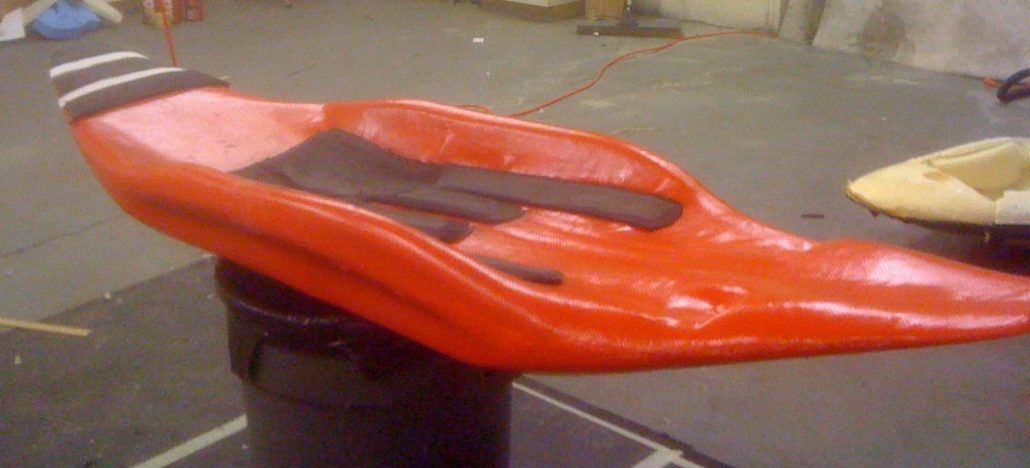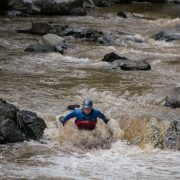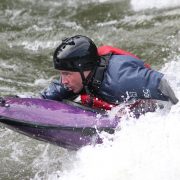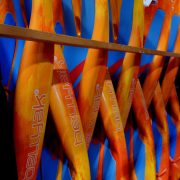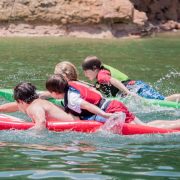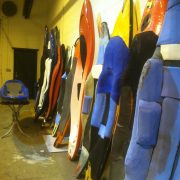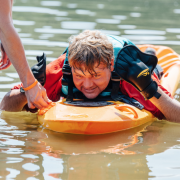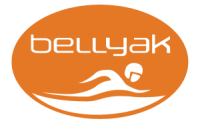History of Bellyak: Evolution Part 1
Asking Better Questions
“Why do we only design boats with sprayskirts?”
Growing up in the small town of Easley, SC, from a family that made kayaks, all of my friends wanted me to teach them how to paddle. I didn’t enjoy this responsibility. First, I had to get them over the fear of the sprayskirt and then stand there while they awkwardly tried to roll. When they did swim I had to round up all of their gear and get their boat that was now full of water to shore and start over. I wanted to share my love of the river with my friends, but spending days on class II chasing gear just wasn’t any fun.
I based my teenage years and early twenties around paddling as much as possible, choosing where I went to college based on proximity to rivers. Around 2002 I became obsessive about hand paddling, as I loved the extra control and finesse required to do it well. Eventually I got pretty dang good at kayaking and started to get myself in situations where mistakes could be terminal. I thought, what would it be like to be able to have this much fun without worrying about my friends having to potentially notify my next of kin? I wanted to spend my time playing fiddle, and have my river time be somewhere happily between bored and scared to death. I wanted to make the Ocoee great again.
How can I have Class V thrills with Class III consequences?
I used to live on a small creek called Cane Creek in upstate SC. One day after a heavy rain, the small creek was almost out of it’s banks. I was itching to paddle it, but the overhanging rhododendron was creating a tunnel that was too small for a kayaker with a paddle. So…
“What if I laid on top of my boat and paddled with my hands?”
I put my sprayskirt on my Liquid Logic Gus, duct taped the tunnel together to keep water out, and put on an old pair of webbed gloves. I pushed off the shore, face first on top of my kayak into the class II creek and I felt like I was flying, on top of my kayak. I called it the bellyak in those first few moments and the name has stuck ever since.
How Can I Make This Better?
I needed to lower my center of gravity in the boat and eliminate the negative space. My dad and I took my old Perception 3d and a jigsaw, cut off the top, added 36 cans of sprayfoam, covered it in plastic sheeting and duct tape now I had a bellyak that weighed 68 pounds bone dry and leaked slow enough to prove that it was awesome. Small rapids? Big again. The feeling of hand paddling, while feeling every current throughout my entire body, was mesmerizing. Everything felt completely new. In the process I had discovered how to combine freestyle kayaking with swimming and the result re-ignited my love of paddling x’s 10.
How can I make another one for my friends?
At the time I was teaching my good friend (and still second best bellyaker in the world), Callan Welder how to kayak. Callan is an extremely gifted athlete, the kind of person who backflips off cliffs on skis for fun. But Callan got boogered up over being upside down underwater. He would paddle great and once he flipped forget where he was and swim. The first time Callan tried the bellyak, he learned more about reading and running rapids than he did in his previous two years of kayaking. Eliminating the sprayskirt created so much more confidence; he had no fear of flipping over so he relaxed and when you relax…you succeed. We could be on the same stretch of Class II but the freedom and versatility of the bellyak allowed me to interpret the river in ways never before imagined, and I didn’t have to worry about my friend flipping and swimming, since self-rescue is the name of the game for bellyak.
The earliest and roughest versions of the bellyaks were the original Perception 3D, a Perception Whip-It and an early Corran Addison design, the Black Attack. These worked well enough to prove the concept, but all filled with water (because the duct tape came off) and thus were nearly impossible to drain and thus, short lived.
Design Evolution of the Bellyak: Part One
Mainly because I wanted better boats for Callan and I, and I was going to quickly use up my existing kayaks (of which I paid for every one), I needed to figure out how to make multiple bellyaks out of one kayak. I had a vision of using the kayak as a mold and filling it with expandable foam. I would then create a plug that I could shape to work on the ‘body to boat’ interface and then I could fiberglass the foam in epoxy and glass, making a paddleable prototype. I called it “moderately rapid prototyping” or “why Adam has a huge stack of kayaks cut in half.” I taught myself how to do this via the internet, my dad and my uncle Allen Stancil. (Surfer Steve has a great blog about how to build your own surfboard)
Perception Phat
Phat #1:
This was my first time learning how to shape foam. I used all manner of tools to carve the plug, but the best was a paint removal disc on a right angle grinder. It made a huge dusty mess.
The Phat had a displacement hull which meant it had very little secondary stability as it tended to ‘roll’ without a break. This was not an ideal user experience as it tended to dump people right off. Secondary stability was going to be a key element for whitewater prone paddling. The extra bow volume was confidence inspiring, as it resurfaced very easily and stayed on top of the water.
Phat #2:
First version of toe braces, didn’t get paddled much, didn’t measure/account for 80% of bodyweight being in the front of the boat. Toe braces provided nice body to boat contact boat but limited the ability to hang off the back of the bellyak and ‘blast’ holes.
Liquid Logic Session:
Awesome, super responsive hull for prone paddling, but I took too much volume out of body area and thus it functioned like a prone squirt boat. I could tell that the wide, flat planing hull provided excellent stability for prone paddling, and the defined edges made it super responsive to carving downstream.
What the Phat bellyak proved to me was that this was a great idea. I was running rivers IN CONTROL, with the exact same performance characteristics as my kayak: I could carve, edge, spin and catch eddies and boof. Granted, I was only paddling Class III, but the fun I was having was unreal. I knew there was work to do. The key part of the bellyak are the sidewalls: these are crucial for lateral stability (because you want to be able to carve without coming off the boat). The height/width/depth of the body pan was a variable that I knew needed refining. But the concept: the concept of paddling, on your stomach, with only your hands for propulsion through whitewater left me thinking “why hasn’t anyone done this before??” I had two things to refine: My skills at prototyping and executing my ideas so that I could test them, ask questions, and refine.
The Session showed me that a wide, planing hull was a foundation to work off of. The stability, ability to spin on a dime, and ability to achieve top hull speed quickly were all elements that enhanced the prone paddling experience. I had a lot to learn about volume distribution and fiberglassing, as well as figuring out how to create the ideal ‘body to boat’ interface.
There is nothing like paddling down the river with just a boat you designed and built between you and the water. These first prototypes let me know what was possible. But now it was winter 2010, so I got to work in earnest, knowing spring was coming, and with it, more belly kayaking.
I had learned enough to know that my idea was worth patenting, so in December of 2010, I filed for Provisional Patent. The provisional patent was later converted to a Utility Patent: you can read it here.
Next Chapter: History of Belly: Evolution Part . Rise of the Freestyle Bellyak, mountains of foam dust, and an old meat locker.
